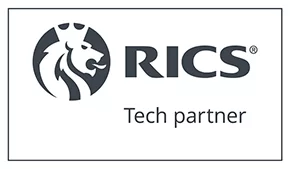Setting the right charge-out rate is key to running a profitable business. Use our guide to calculate your rate, stay competitive, and achieve your financial goals.
What Is a Charge-Out Rate?
A charge-out rate is the fee you charge clients for using your business’s resources, typically calculated per hour of labour. It covers:
- The employee’s salary or hourly wage
- Overhead costs like tools, rent, and utilities
- Unproductive time, such as holidays or sick leave
- Your desired profit margin
This rate ensures you cover costs and generate a profit, whether charging for a tradesperson’s time or equipment usage.
Why Setting an Accurate Rate Matters
Setting the right charge-out rate is essential for several reasons:
- Profitability: Ensure your business remains financially viable by covering costs and generating profit.
- Competitiveness: Avoid underpricing or overpricing compared to industry standards.
- Transparency: Clear rates help build trust with clients and justify your fees.
- Strategic Planning: Helps evaluate whether projects are worth taking on based on their profitability.
Working out your charge-out rate is just one part of launching a solid business. Our full guide on how to start a construction business covers registration, compliance, branding, and pricing tools.
How to Calculate Your Charge-Out Rate
Calculating your charge-out rate involves four key steps:
Step 1: Define Your Desired Annual Income
Start by determining your target income for the year. Consider factors like your desired standard of living and future financial goals. For example, if you aim for an annual income of £80,000, this figure forms the base of your calculation.
Step 2: Calculate Annual Chargeable Hours
Not all working hours are billable. Subtract time for holidays, sick leave, and non-chargeable tasks (e.g., admin, quotes, and travel) from the total work hours in a year (typically 2,080). Realistically, you might only have around 1,350 chargeable hours annually.
Step 3: Factor in Overheads
Overheads include all the costs required to keep your business running, such as:
- Tools and equipment
- Office rent and utilities
- Vehicle expenses
- Insurance and taxes
Divide your total annual overhead costs by your chargeable hours to calculate their contribution to your hourly rate.
Step 4: Add Your Profit Margin
To ensure your business thrives, add a profit margin to your break-even rate. For example, a 15% profit margin on a £96/hour break-even rate brings your final charge-out rate to £110.40/hour.
Using Multiple Rate Structures
To cater to different client needs, consider offering varied charge-out rates, such as:
- Standard Rates: For typical projects.
- After-Hours Rates: For evenings, weekends, or emergencies.
- Apprentice Rates: Lower rates for junior staff.
- Loyalty Discounts: Special rates for repeat clients.
Reviewing and Adjusting Your Rates
Market conditions and business costs change over time. Regularly reviewing your rates ensures they remain competitive and profitable. Compare your rates with industry averages and adjust for any shifts in costs, competition, or demand.
Use tools like our Charge-Out Rate Calculator to make updates easier and more accurate.
FAQs: Charge-Out Rates
- 1. How do I calculate a charge-out rate for a construction project?
- Calculate your charge-out rate by dividing your desired annual income and overhead costs by your chargeable hours. Add a profit margin to ensure profitability. Use tools like our Charge-Out Rate Calculator for accuracy.
- 2. How do I account for non-chargeable hours in construction?
- Non-chargeable hours, such as admin, travel, and sick leave, should be factored into your rate. Divide total annual costs (including overheads) by realistic chargeable hours to account for these periods.
- 3. Should I have different charge-out rates for various construction services?
- Yes. Offering different rates for standard services, after-hours work, and emergency callouts ensures you’re charging appropriately for the value and urgency of each service.
- 4. How can I determine if my construction charge-out rate is competitive?
- Research local competitors’ rates for similar services. Ensure your rate reflects your expertise, quality of service, and value-added benefits while covering your costs and profit margins.
- 5. How do I calculate a charge-out rate for construction equipment?
- Include the equipment’s purchase or lease cost, maintenance, fuel, and operator wages in your calculation. Divide these costs by the equipment’s expected billable hours annually.
- 6. How can fluctuating material costs affect my charge-out rate?
- Rising material costs can impact your profitability. Regularly review and adjust your charge-out rates to ensure they account for increased material expenses in construction projects.
- 7. What is a typical profit margin for construction businesses?
- Construction profit margins usually range from 10% to 20%, depending on the size and complexity of projects. Adjust your margin based on market conditions and your business goals.
- 8. How can I justify higher charge-out rates to construction clients?
- Highlight your expertise, quality materials, safety standards, and project guarantees. Providing transparent breakdowns of costs and showcasing past successful projects can help justify premium rates.











